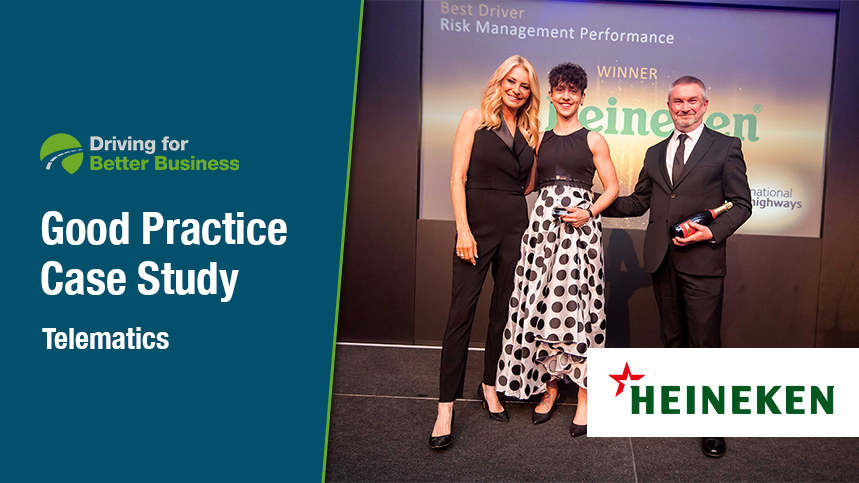Heineken – Telematics
While the company had previously had access to telematics data, it was neither used not fed back to drivers. This is perhaps the most problematic of all words for fleet operations – to have evidence of risk but not address it.
Reka enlisted the help of a legal and employee council to bring the system back to life. The system was explained to both employees and managers, and restructured so that:
- Managers only see aggregate and not individual data
- Employees receive their own reports in confidence. The drivers can then request training if they feel it will be beneficial to them from their line manager or the fleet team.
While initial driver training specific to the individual’s needs is prescribed during the permit to Drive assessments, further training is by request. As managers only see aggregate telematics data, they cannot identify individual needs. However, team leaders can request training for their whole team, (in which they also participate) or individuals can ask their manager to arrange training, or speak directly and privately with the fleet team. Reka says: “We give drivers ownership of their data and their performance. It’s about trust and accountability.”
Speeding target
For all Heineken empowered its own drivers to push through behavioural change, this does not mean the company did not have targets of its own. Having reviewed all the driving performance data, Reka decided to focus on reducing speeding events, on the basis that this would naturally facilitate other improvements.
For six months they monitored each group’s speeding events per 1,000 miles, and the winning team received prizes of a spa weekend.
The aggregate results were published every month and if no improvement was apparent, teams were offered help and support.
Know your triggers
One key piece of messaging was to encourage each individual to know their own triggers for speeding. These could be:
- Organisational pressure
- Poor journey planning
- The vehicle behind tailgating
- Or emotional or unconscious triggers.
In this way not only the driving behaviour improved, but often also the stressful issue underlying it. The company offered support with welfare, mental health and specific issues, as well as offering driver communications about topical or seasonal issues.
Mobile telemetry
The disadvantage of black box telematics is that it is fixed in the vehicle, and is less flexible than a mobile app. Heineken invested in the Brightmile smartphone app, which monitors driver performance in any vehicle. It’s a more engaging solution for drivers, makes reporting business mileage extremely easy and can be turned off when employees are not at work.
Every mile safely driven earns a point; these points can make drivers eligible for a prize draw or trigger a charity donation when the driver hits their target.
“Linking good driving behaviour to a bigger positive, such as charity, makes it about more than ‘just driving’. I found it very powerful that by driving more safely, we can also help those who are in need,” says Reka.
Brightmile scores five areas: risk, fatigue, speeding, distraction and ‘eco’. Through these five headings it can address all the major high-risk behaviours and contributors to collision.
The distraction feature also triggers if a driver physically touches their phone.
Provider: Driving for Better Business
Resource Type: Web link
View Resource

